This will be a hybrid post, a muddle of the two categories, by no means an exhaustive inventory of what’s in
bloom and leaf here, early spring in zone 10. There’s salvias, annual poppies, succulents throwing out the odd
flower, even a long-awaited bloom on a dyckia, but it seems to be less and less about flowers in my garden these days.
(Which hurts my stomach to type that.) What will happen to my former obsession with a symphony of flowers for spring
and summer? Has my obsession foundered on the shoals of middle age? Will my agastaches survive these El Nino winter
rainstorms? Such weighty matters are inappropriate considerations for Bloom Day, so off for a stroll among the flowers.
Well, that was a short stroll. Five feet out the back door and we find Orlaya grandiflora, Minoan Lace,
a charming umbellifer from Crete, who has been the devil to photograph. The intriguing fretwork of its flower
is more often than not buried in an undifferentiated white smudge of pixels. But I keep trying.
The flower bud is a slightly less difficult subject:
The orlayas will hopefully self-sow as happily as plants like haloragis and labrador violets. That is to say, those last two are the happy ones,
not me, with their fecundity — I’m so-so about the haloragis and absolutely in despair over the violets.
Another “happy” plant, Corydalis heterocarpa, garden thuggery disguised in an ornately compound leaf, has the most vile, sickly sweet,
retch-inducing smell when handled. No doubt a major factor in failures at eradication and its continued success in my garden.
The orlayas have been planted among ‘Blackbird’ euphorbias, all grown from cuttings last summer.
They are not yet the good-sized plants envisioned as boon companions for the wispier transient stuff but are still just a few inches high:
From Annie’s Annuals, the seed strain Giovanni’s Select of cineraria has reached 3 feet and is budding:
Magnolia liliiflora ‘Nigra,’ the Tulip Tree. I seem to be doing everything wrong with this magnolia — not enough water,
too much pruning needed due to poor siting — but still it thrives. For over 15 years, its big leathery leaves have screened and shaded
the west side of the house in summer, and for this it is forgiven the unsightly mildew (water stress?) it succumbs to without fail every year.
I doubt I’d plant him again. I’m normally not a sentimental gardener but make an exception in this case. The magnolia stays.

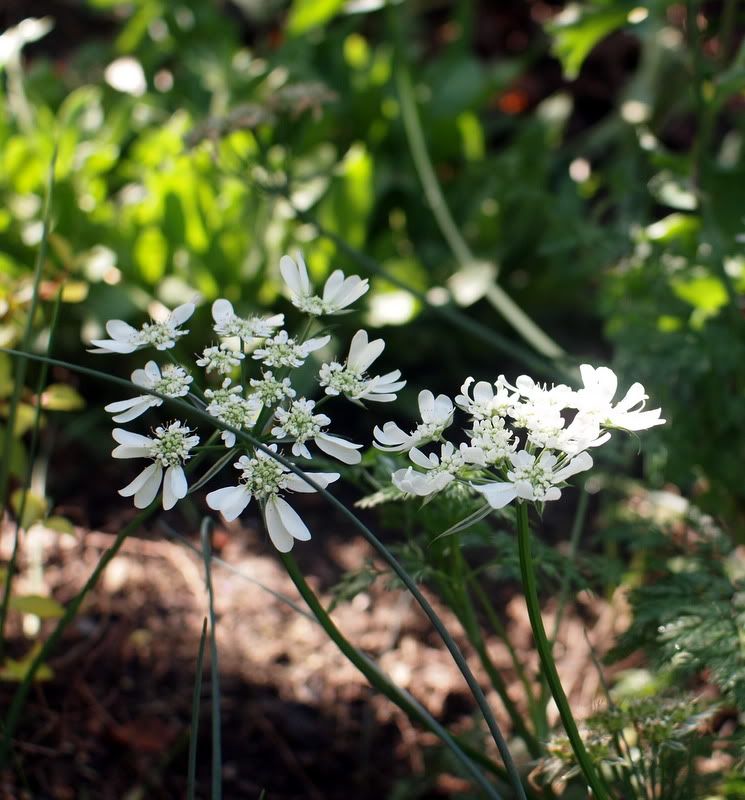
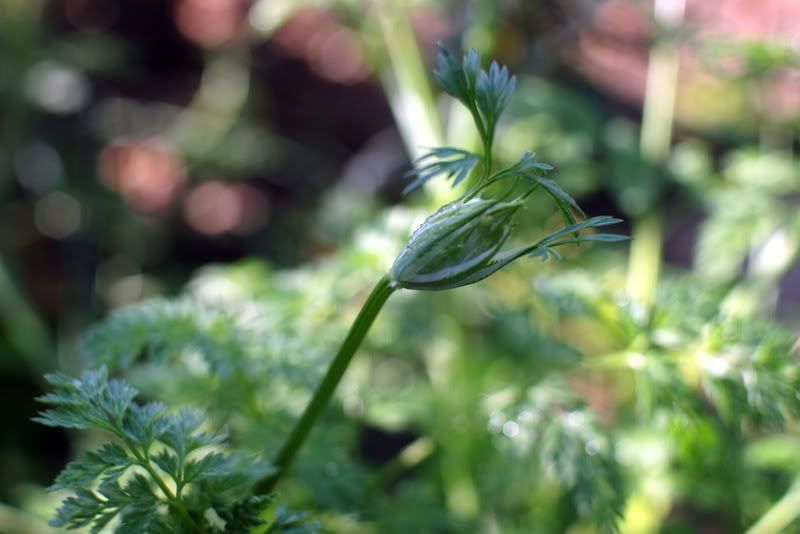
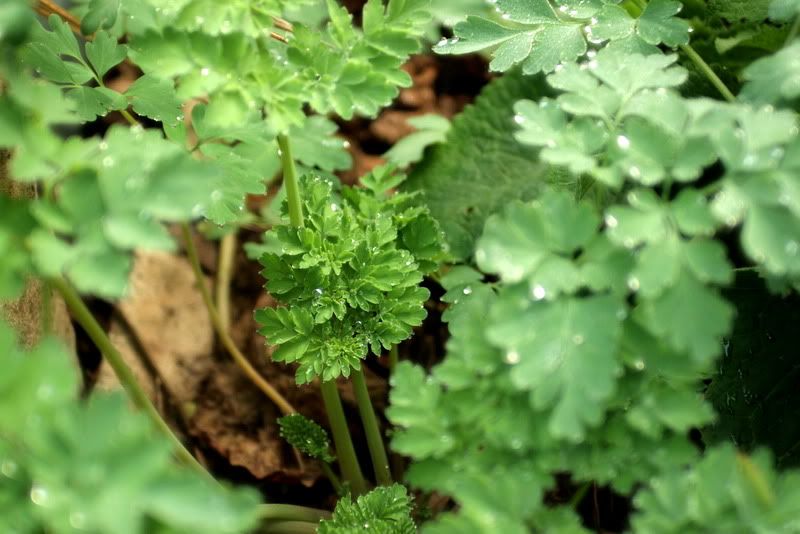
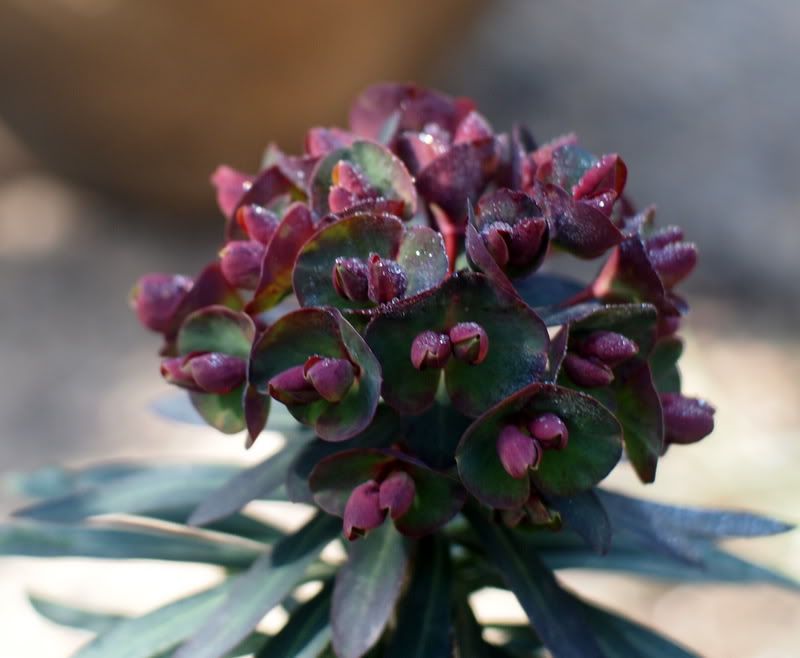
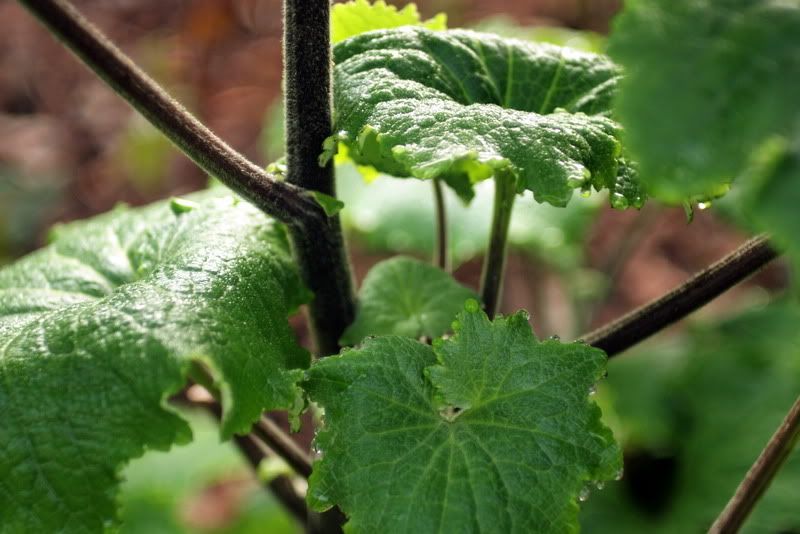
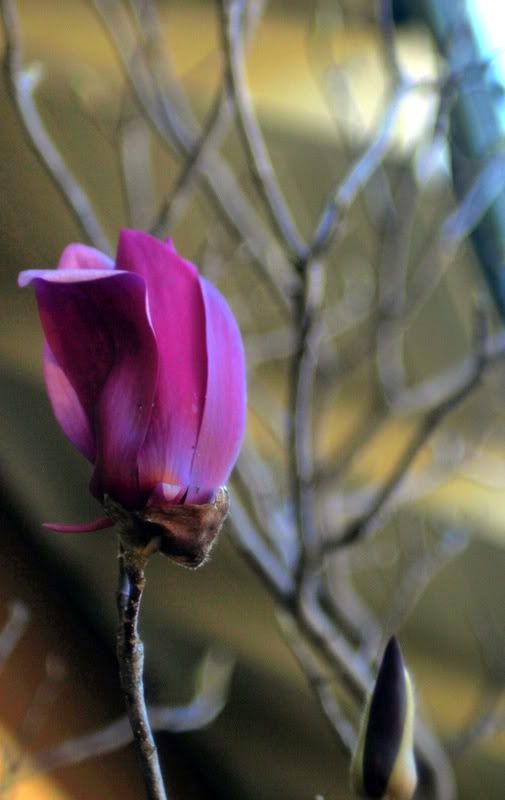
Sometimes even the most disciplined gardener has to make a sentimental choice. Those little surprises express the gardener’s personality, and I enjoy them.
True, Pam — and I’m not that most disciplined gardener. The cooling effect in summer from a mature shrub on that hot western exposure is worth more than spring flowers these days, so it’s a keeper.